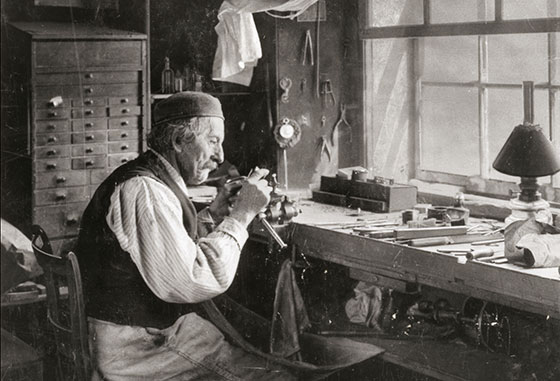
On 22 October, the Federal Council approved an indicative list of eight Swiss traditions derived from the “List of living traditions in Switzerland” which was published in 2012; they are to be candidates for registration as part of the Intangible Cultural Heritage of Mankind. Alongside management of the avalanche risk, Swiss graphic and typographic design, the alpine pasture season and the Basel Carnival, mechanical watchmaking expertise will be proposed to the UNESCO Committee for the Intangible Heritage.
In the category of expertise linked with the traditional craft trades, watchmaking in Switzerland today is part of a modern and industrial reality with a global dimension. But it also involves skills of an almost exclusively manual nature – trades of beveller, pivot maker, polisher, dial maker, dial printer, fitter of applied chapters, stamping expert and master watchmaker, all of which constitute the very foundation of watchmaking as a heritage industry. This dynamic is particularly apparent in the manufacture of automatic devices and music boxes in Sainte-Croix, which has retained its dimension of a craft trade – a heritage in which the inhabitants of the locality take extreme pride. They refer to the “spirit of Sainte-Croix” as a mark of respect for craft workmanship. This nomination will highlight the importance of training in watchmaking and human dexterity which remain as essential as ever to innovation and technical precision. Moreover, although the primary function of expertise of this kind is economic, it has also shaped the urban fabric and daily social reality of the regions concerned and conveys a symbolism of its own associating notions of precision, mechanical refinement and time with very real consequences for the definition of local and regional identities.
The Swiss nominations will be put forward in partnership with the practitioners concerned. They may be registered in March each year with a view to their inclusion on the official list in the autumn of the following year. In principle, only one national nomination can be put forward for each registration cycle beginning in 2015.
With its Convention for the protection of the intangible cultural heritage, UNESCO focuses attention on and seeks to protect a capital that is not embodied in stone and space but in time, community practices and social interactions. This heritage encompasses living traditions such as oral expression, the performing arts, social practices, rituals and festive events, knowledge of nature and the universe and craft skills. By doing so, it bears witness to the great cultural diversity and creativity of mankind.
October 31, 2014


 News
News